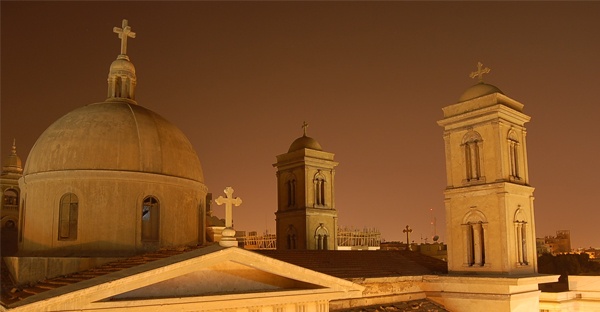[ad_1]

The Context of Global Christian Persecution
According to the most recent information available from the Pew Research Center, in 2014 “roughly three-quarters of the world’s 7.2 billion people (74 percent) were living in countries with high or very high restrictions or hostilities” involving religion. Although these statistics were modestly better than 2012 and 2013, 2014 showed a “marked increase in the number of countries that experienced religious-related terrorist activities,” and this was primarily due to Islamic terrorists associated with Boko Haram in West Africa, and al-Qaida and Islamic State (ISIL, ISIS, or Daesh), often in the Middle East.
The number of countries with injuries or deaths from “religion-related terrorism” rose from 51 in 2013 to 60 in 2014. Eighteen of 20 countries in North Africa and the Middle East experienced “religion-related terrorism.” It is also important to note that since 2014 there has been an increase in Islamic terrorism outside North Africa and the Middle East. This is a clear reminder that what happens in the Middle East and North Africa does impact very directly the rest of the world.
Not surprisingly, most victims of religious violence and persecution are Christians and Muslims—the two largest religions; though there has also been a rise of anti-Semitism, including violent anti-Semitic attacks in Europe. The most dangerous places to be a Christian in the world include North Korea, North Africa, the Middle East, Afghanistan, and Pakistan.
Open Doors reports that every month 322 Christians are killed, 214 churches or Christian properties are destroyed, and 772 forms (acts) of violence are committed against Christians. The great majority of the top fifty countries where Christians face the most persecution are Muslim-majority. This represents a very real challenge to Christians, but also to Muslims throughout the world, the majority of whom do not even live in the Middle East (indeed, only 20 percent of the world’s Muslims do).
Though the relationship between Christians and Muslims has frequently been strained through the centuries, it has often been better and more tolerant than in recent decades. In fact, Muslims and Christians have often been capable of living together quite peaceably in the past, which offers hope for the future.
The enormous pressure on persecuted Christians in parts of the Middle East to flee is completely understandable. Yet, it is imperative that we understand that a Middle East devoid of Christians and other religious minorities would be a tragedy—a tragedy not only for Christians and others who have lived in the Middle East for centuries, but a tragedy for an outward-looking and tolerant Islam. Thus, it is in everyone’s best interests to not lose hope and to develop strategies which will promote pluralism and religious freedom. To stay, if at all possible, is what Middle Eastern Christians most want to do and what they feel called by God to do.
Christianity is Ancient in the Middle East
Some Americans envision the Middle East as a monolithic sea of Arabs and Muslims, and they fail to see the rich pluralism of diverse ethnic and religious communities that have inhabited this region for centuries. Far from being the byproduct of Western colonialism, Christianity in the Middle East has ancient roots that reach back to the first century.
The second Chapter of Acts, which talks about the birth of the Church, tells of the Day of Pentecost, fifty days after the resurrection—the day considered the foundation of the Christian Church when 3,000 believed and were baptized. Among those who are listed as present are the Parthians, Medes, and Elamites—from modern-day Iran and Iraq. We have historical data of this story that goes back to Eusebius in the fourth century, who talks about bishops in this part of the world. There was a converted Jew who was a bishop in Mesopotamia around 100. In fact, there were more Jews living in Mesopotamia in the first century than there were in the Holy Land, and many of them became Christian. Until about 600, more Christians lived in Mesopotamia than in the entire West put together. Mesopotamia was not only the center of Christianity but was also a center of missionary activity that extended to Mongolia, China, and India. The languages Christians speak in places like southern India reveal this history. It is Syriac, a language close to what Jesus spoke. Christians in both the East and Mesopotamia today celebrate Mass in Syriac because of this ancient history.
Click here to read more.
SOURCE: Providence Magazine
Kent R. Hill
Related
[ad_2]
Source link
